Nine Inch Nails | ||
| Allmusic Biography : Pulling the harsh sounds of industrial rock into the mainstream, Trent Reznor and his band Nine Inch Nails became the face of industrial music in the 90s with hits "Head Like a Hole," "Closer," and "Hurt" gaining radio and television airplay as the band rose to the top of the charts with influential releases The Downward Spiral (1994) and The Fragile (1999). Nominated for over a dozen Grammys, NIN won a pair of Best Metal Performance awards in 1992 and 1996 for two tracks -- "Wish" and "Happiness in Slavery" -- from their metallic EP Broken. Extending longevity into the 2000s, NIN evolved while maintaining chart success with 2005s With Teeth, 2007s Year Zero, and 2013s Hesitation Marks, even as the bands style shifted to incorporate more atmospheric electronic elements influenced by frontman Reznors Oscar-winning film score composition. In 2016, after decades as the only official member of the band, he welcomed English producer Atticus Ross -- his longtime film scoring partner and bandmate in side project How to Destroy Angels -- as NINs first official second member. Michael Trent Reznor was born May 17, 1965, in New Castle, Pennsylvania and raised in Mercer, a small town outside Pittsburgh. His parents divorced when he was six and he was raised by his maternal grandparents. As a child, Reznor had already developed a keen interest in music. He learned to play piano, tenor sax, and tuba, playing in his schools jazz and marching bands while also acting in high-school productions of Jesus Christ Superstar and The Music Man. Outside of the classical sphere, his biggest rock influence was Kiss, whose theatricality and live shows would later inform NINs acclaimed stage production. While studying music and computer engineering at local Allegheny College, he was a fleeting member of new wave outfit Option 30, contributing vocals and keyboards before parting ways with the band when he dropped out of school to pursue music full-time. He packed up and moved to Cleveland, Ohio with his friend Chris Vrenna, who later became a founding member of the first incarnation of NIN. While in Cleveland, Reznor was drawn to new wave and the industrial sounds of Ministry and Skinny Puppy. He gigged around town for a few years, playing in cover band the Urge before joining the Innocent as their keyboardist. The latter band released a single full-length, 1985s Livin in the Street (Red Label Records), before Reznor quit. He soon hooked up with synth pop group Exotic Birds, contributing keys, programming, and backing vocals, while also recruiting Vrenna on drums. Despite their brief run together, Reznor appeared with the band in the 1987 Michael J. Fox/Joan Jett film Light of Day as a fictional band dubbed The Problems. His final roles in the local keyboardist circuit were with pop outfit Slam Bamboo -- they issued a single "White Lies"/"Cry Like a Baby" in 1988 -- and new wavers Lucky Pierre, whose vocalist Kevin McMahon would later form Prick, one of the first signees to Reznors future record label, Nothing Records. During these stints, Reznor continued to work on his own material while employed as an assistant engineer and handyman at Clevelands Right Track studio. When the shop closed for the day, owner Bart Koster allowed Reznor to use the facilities for free. The seeds from these early recording sessions -- on which he played keyboards, drums, guitars, and samplers himself -- would grow into Nine Inch Nails first demo, Purest Feeling. After making NINs live debut as tour openers for Skinny Puppy, Reznor shopped the demo tape around the U.S., landing a deal with indie label TVT Records. Reznor quickly returned to the studio to polish existing Purest Feeling tracks and record some new songs. The result, 1989s Pretty Hate Machine, presented a dark, synth-soaked vision of industrial that was also hook-heavy and accessible. Combined with a lyrical focus on sex, self-loathing, betrayal, angst, and religion, these attributes would become hallmarks of Reznors early-era material. Pretty Hate Machine only peaked at number 75 on the Billboard 200, but a burgeoning cult following helped maintain chart presence and sales. Buoyed by radio and MTV airplay for singles "Down in It" and "Head Like a Hole," it became the first independent release to receive platinum certification to date. Promotion of Pretty Hate Machine kept the band (then primarily composed of Reznor, Richard Patrick, Chris Vrenna, and various drummers/keyboardists) on the road for years, spreading NINs fan base across genre lines by not only opening for Skinny Puppy, but also alternative/goth acts the Jesus and Mary Chain and Peter Murphy of Bauhaus. Their American reach expanded in 1991 when they joined inaugural Lollapalooza tour, playing alongside Siouxsie and the Banshees, Living Colour, Violent Femmes, Rollins Band, Lords of Acid, Janes Addiction, and more. Days after the conclusion of Lollapalooza, NIN shipped off to Europe, opening a pair of shows for Guns N Roses and penetrating the German industrial market. When NIN returned to the U.S., Reznor became embroiled in a lengthy legal feud with TVT, which was eager to pump out another, similar-sounding hit album, constricting his creativity in the process. In secret, he signed a new deal with Interscope Records and created the vanity label Nothing Records. The band relocated to a new studio in Los Angeles and began recording a batch of aggressive songs inspired by punk and metal. With production by Flood and drumming by Martin Atkins and Vrenna, the Broken EP landed in September 1992, peaking inside the Top Ten on the Billboard 200. In addition to the Grammy-winning single "Wish," the effort also included covers of Adam and the Ants "(Youre So) Physical" and Reznors collaboration with Pigface, "Suck." Reznor enhanced his reputation as a provocateur with a widely banned music video for "Happiness in Slavery," which depicted S&M; performance artist Bob Flanagan being torn apart by a machine. There was also a near-mythical, long-form clip for Broken that was never officially released commercially due to its graphic content (a torture victim is dismembered while viewing NIN videos). Bootleg versions became a prized fan commodity and a remastered version found its way onto the Internet in 2006. The Broken era came to a close with NINs first remix EP, Fixed. Still based in the Los Angeles studio dubbed Le Pig -- coincidentally built in the same house where actress Sharon Tate was murdered by Charles Mansons followers in 1969 -- Reznor began work on the highly anticipated follow-up to Pretty Hate Machine. A concept album centered on the protagonists titular descent into self-destruction, The Downward Spiral arrived in March 1994 and debuted at number two. Widely considered to be Reznors masterwork, The Downward Spiral is often cited as one of the most important albums of the 90s, presenting a bleak, nihilistic version of NIN that would nonetheless break the band into the mainstream. Hit single "Closer" was a staple on both MTV and radio, despite its graphic music video and lyrical content, while "Hurt" became a live fixture for NIN, receiving a second life in 2003 through Johnny Cashs stripped-down cover version. The Downward Spiral was anything but for the band, launching them further into the public consciousness and prompting an industry push for sound-alikes like Gravity Kills, Stabbing Westward, and Filter on rock radio. NIN promoted the effort with the Self Destruct Tour, which featured Vrenna on drums, James Woolley on keyboards, Robin Finck on guitar, and Danny Lohner on bass. Already a formidable concert presence, NINs reputation grew with chaotic performances that often ended in destroyed equipment and serious injuries. That intense commitment to their live show reached into American living rooms in the summer of 1994 with their show-stealing, mud-covered set from Woodstock 94, which won them another Grammy for the live recording of "Happiness in Slavery." After the release of the remix album Further Down the Spiral, NIN continued to tour, supported by then-newcomers Marilyn Manson, before joining major influence David Bowie on the co-headlining Dissonance Tour. During this period, Reznor took his first step into the world of film, assembling the soundtrack to Oliver Stones controversial movie Natural Born Killers, which included the previously unreleased NIN song "Burn," as well as edits of "Something I Can Never Have" and "A Warm Place." Another track, a cover of Joy Divisions "Dead Souls," was featured on the soundtrack for The Crow. Reznor also contributed vocals to Tori Amos "Past the Mission" from her album Under the Pink. After the conclusion of the Spiral era, NIN entered a period of hibernation. Although Reznor remained active -- producing Marilyn Mansons breakthrough sophomore effort, Antichrist Superstar, and contributing the NIN single "The Perfect Drug" to the Reznor-produced soundtrack to David Lynchs Lost Highway -- a growing case of writers block, struggles with drug and alcohol addiction, and public pressure put a hold on album number three. Encamped at the newly constructed Nothing Studios in New Orleans, a reclusive Reznor spent five years crafting that follow-up, which arrived in 1999. Influenced by the passing of Reznors maternal grandmother, the deterioration of his friendship with Manson, and his increasing addictions, the conceptual double-disc opus The Fragile debuted at the top of the charts and was certified double platinum within months. Meticulously produced by Reznor and Alan Moulder, the album included singles "Were in This Together," "The Day the World Went Away," "Into the Void," and "Starfuckers, Inc." The remix LP Things Falling Apart featured interpretations of Fragile tracks, as well as the unreleased "10 Miles High" and Gary Numan cover "Cars." On the supporting Fragility tour, the NIN lineup featured Reznor, Finck, and Lohner, as well as newcomers Charlie Clouser on keyboards and Jerome Dillon on drums. That trek spawned a tour documentary titled And All That Could Have Been, which was accompanied by a live recording and limited-edition EP, Still, which featured stripped-down versions of NIN deep cuts, as well as previously unreleased recordings from the era. Toward the end of the Fragile years, Reznor entered rehab after an unexpected overdose in London, putting NIN on hold until they returned in 2005. Sober and refocused, Reznor inaugurated this new chapter with an equally hungry release, fourth LP With Teeth. Unlike prior albums, With Teeth traded gloom, frustration, and pain for outward aggression, matured emotions, and Reznors first attempts at sociopolitical commentary, also marking a turning point for NIN that informed the vocal delivery, production, and collaborative spirit of the band into the next decade. In addition to production by Reznor and Moulder, the taut set featured programming by Atticus Ross and live percussion by Dave Grohl. In addition to being the bands second straight number one, With Teeth also included a trio of chart-topping singles: "The Hand That Feeds," "Only," and "Every Day Is Exactly the Same." A lengthy tour -- featuring the lineup of Reznor, bassist Jeordie White (aka Marilyn Mansons Twiggy Ramirez), keyboardist Alessandro Cortini, guitarist Aaron North, and drummers Josh Freese/Jerome Dillon -- accompanied the release, documented on 2007s Beside You in Time. While the first decade of NINs existence was marked by mystery and long periods of silence between major releases, the reinvigorated outfit began churning out material in earnest after With Teeth. In early 2007, a multimedia promotional effort was rolled out to earnest fans who deciphered clues found on T-shirts, websites, and strategically placed USB drives placed hidden throughout Europe. Part of a high-concept alternate reality game, they revealed a fictional story of a future dystopian America and a burgeoning resistance movement, all of which was inspired by George W. Bushs presidency and the post-9/11 Iraq invasion. This overtly political concept was at the core of Year Zero, which arrived in April on Interscope Records. Delving deeper into digital soundscapes, Reznor was once again joined by Ross, who was promoted from assistant to producer (a position he would hold until becoming an official member of NIN a decade later). The promotional tour took the band through Europe, Australia, the U.S., and Asia, notable for featuring NINs first stop in mainland China at the Beijing Pop Festival that September. While a television show and movie were planned to accompany the Year Zero story, those never came to fruition. The album cycle closed with Year Zero Remixed, which featured reinterpretations by Ladytron, Bill Laswell, the Faint, and rapper Saul Williams, whose third effort, 2007s The Inevitable Rise and Liberation of NiggyTardust!, was produced by Reznor. During this prolific period, NIN also released the four-part ambient instrumental album Ghosts I-IV -- released on Reznors new label, The Null Corporation -- as well as the surprise album The Slip. Both 2008 efforts were available for free in their digital formats. While The Slip charted outside the Top Ten on the Billboard 200 and the single "Discipline" became another rock chart hit, Ghosts was nominated for a pair of Grammy Awards. Continuing the direct-to-fans approach, NIN later provided live footage from their accompanying Lights in the Sky tour to online fans, who stitched the pieces together to create a documentary dubbed Another Version of the Truth. The next year, NIN embarked on another trek, the forebodingly dubbed Wave Goodbye tour. When the journey concluded, the band entered an official extended hiatus, during which time Reznor and Ross focused on film scores for director David Fincher (2010s Oscar-winning The Social Network, 2011s The Girl with the Dragon Tattoo, and 2014s Gone Girl). The pair also formed a side project with Reznors wife, Mariqueen Maandig, called How to Destroy Angels. Essentially NIN with a female vocalist, the outfit released a pair of EPs in 2010 and 2012, as well as a full-length album in 2013. Months after the conclusion of their first tour, NIN returned with their eighth album. The Grammy-nominated Hesitation Marks (Columbia/The Null Corporation) was issued in August 2013. Produced by Reznor, Ross, and Moulder, it debuted at number three on the charts and included the Top Ten single "Came Back Haunted" as well as "Copy of A" and "Everything." Guest collaborators on the album included Pino Palladino, Lindsey Buckingham, and Adrian Belew. The ensuing Tension arena tour featured backup vocalists Lisa Fischer and Sharlotte Gibson alongside another revamped lineup that included Reznor, Finck, Cortini, Palladino, drummer Ilan Rubin, and guitarist Josh Eustis. NIN extended the Hesitation Marks cycle into 2014 with a co-headlining tour with fellow 90s mainstays Soundgarden. That same year, NIN were nominated for induction into the Rock and Roll Hall of Fame. The following year, NIN began the rollout of remastered reissues of past albums. The Fragile appeared in instrumental form exclusively on a streaming platform, with an accompanying collection of instrumental, alternate, and unreleased songs collected as The Fragile: Deviations 1. After the completion of scores for Before the Flood and Patriots Day, Reznor announced a multi-year project that resulted in a NIN EP/short album trilogy, which started with late 2016s Not the Actual Events. A return to the abrasive industrial of the bands earlier days, the five-song set featured the brooding track "Shes Gone Away" and special guests Mariqueen Maandig, Dave Grohl, and Dave Navarro. Also, after decades of NIN liner notes reading "Nine Inch Nails is Trent Reznor," it was announced that Ross had become a permanent member of the band. In the summer of 2017, the second installment of the series arrived. Add Violence debuted in the Top 20 and spawned the radio hit "Less Than," which climbed the Mainstream Rock and Alternative Songs charts. A year later, the trilogy ended with Bad Witch, which was officially issued as the bands ninth album. Notable for lead single "God Break Down the Door" -- featuring jazz saxophone and Reznor singing with a Bowie-esque croon -- Bad Witch also included vocals from the Cults Ian Astbury and Mariqueen Maandig on "Shit Mirror." In support of the effort, NIN embarked on a 2018 tour dubbed Cold and Black and Infinite, which reunited Reznor with the Jesus and Mary Chain after opening for them almost three decades prior. | ||
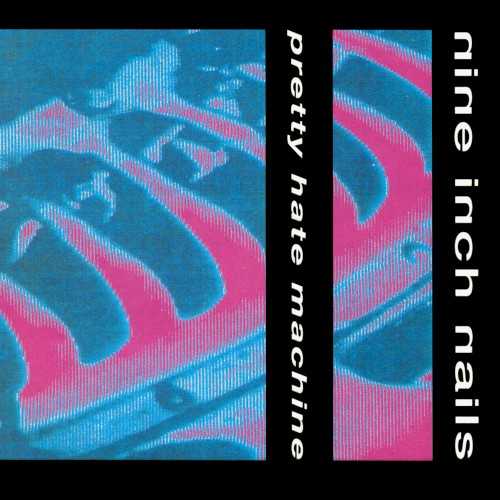 | Album: 1 of 12 Title: Pretty Hate Machine Released: 1989-11-20 Tracks: 10 Duration: 48:54 Scroll: Up Down Top Bottom 25% 50% 75% Spotify Wikipedia Allmusic AlbumCover | 1 Head Like a Hole (05:01) 2 Terrible Lie (04:38) 3 Down in It (03:48) 4 Sanctified (05:50) 5 Something I Can Never Have (Still) (05:54) 6 Kinda I Want To (04:35) 7 Sin (04:05) 8 That’s What I Get (04:30) 9 The Only Time (04:49) 10 Ringfinger (05:40) |
| Pretty Hate Machine : Allmusic album Review : Virtually ignored upon its 1989 release, Pretty Hate Machine gradually became a word-of-mouth cult favorite; despite frequent critical bashings, its stature and historical importance only grew in hindsight. In addition to its stealthy rise to prominence, part of the albums legend was that budding auteur Trent Reznor took advantage of his low-level job at a Cleveland studio to begin recording it. Reznor had a background in synth-pop, and the vast majority of Pretty Hate Machine was electronic. Synths voiced all the main riffs, driven by pounding drum machines; distorted guitars were an important textural element, but not the primary focus. Pretty Hate Machine was something unique in industrial music -- certainly no one else was attempting the balladry of "Something I Can Never Have," but the crucial difference was even simpler. Instead of numbing the listener with mechanical repetition, Pretty Hate Machines bleak electronics were subordinate to catchy riffs and verse-chorus song structures, which was why it built such a rabid following with so little publicity. That innovation was the most important step in bringing industrial music to a wide audience, as proven by the frequency with which late-90s alternative metal bands copied NINs interwoven guitar/synth textures. It was a new soundtrack for adolescent angst -- noisily aggressive and coldly detached, tied together by a dominant personality. Reznors tortured confusion and self-obsession gave industrial music a human voice, a point of connection. His lyrics were filled with betrayal, whether by lovers, society, or God; it was essentially the sound of childhood illusions shattering, and Reznor was not taking it lying down. Plus, the absolute dichotomies in his world -- there was either purity and perfection, or depravity and worthlessness -- made for smashing melodrama. Perhaps the greatest achievement of Pretty Hate Machine was that it brought emotional extravagance to a genre whose main theme had nearly always been dehumanization. | ||
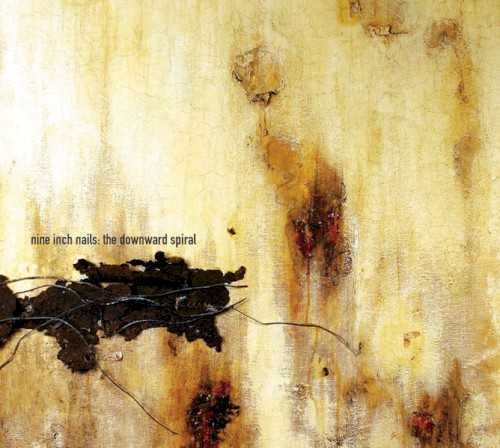 | Album: 2 of 12 Title: The Downward Spiral Released: 1994-03-08 Tracks: 14 Duration: 1:05:07 Scroll: Up Down Top Bottom 25% 50% 75% Spotify Wikipedia Allmusic AlbumCover | 1 Mr Self Destruct (04:30) 2 Piggy (04:24) 3 Heresy (03:54) 4 March of the Pigs (02:58) 5 Closer (06:13) 6 Ruiner (04:58) 7 The Becoming (05:31) 8 I Do Not Want This (05:41) 9 Big Man With a Gun (01:36) 10 A Warm Place (03:22) 11 Eraser (04:53) 12 Reptile (06:52) 13 The Downward Spiral (03:56) 14 Hurt (06:14) |
| The Downward Spiral : Allmusic album Review : The Downward Spiral positioned Trent Reznor as industrials own Phil Spector, painting detailed, layered soundscapes from a wide tonal palette. Not only did he fully integrated the crashing metal guitars of Broken, but several newfound elements -- expanded song structures, odd time signatures, shifting arrangements filled with novel sounds, tremendous textural variety -- can be traced to the influence of progressive rock. So can the painstaking attention devoted to pacing and contrast -- The Downward Spiral is full of striking sonic juxtapositions and sudden about-faces in tone, which make for a fascinating listen. More important than craft in turning Reznor into a full-fledged rock star, however, was his brooding persona. Grunge had the mainstream salivating over melodramatic angst, which had always been Reznors stock in trade. The left-field hit "Closer" made him a postmodern shaman for the 90s, obsessed with exposing the dark side he saw behind even the most innocuous façades. In fact, his theatrics on The Downward Spiral -- all the preening self-absorption and serpentine sexuality -- seemed directly descended from Jim Morrison. Yet Reznors nihilism often seemed like a reaction against some repressively extreme standard of purity, so the depravity he wallowed in didnt necessarily seem that depraved. Thats part of the reason why, in spite of its many virtues, The Downward Spiral falls just short of being the masterpiece it wants to be. For one thing, fascination with texture occasionally dissolves the hooky songwriting that fueled Pretty Hate Machine. But more than that, Reznors unflinching bleakness was beginning to seem like a carefully calibrated posture; his increasing musical sophistication points up the lyrical holding pattern. Having said that, the album ends on an affecting emotional peak -- "Hurt" mingles drama and introspection in a way Reznor had never quite managed before. Its evidence of depth behind the charisma that deservedly made him a star. | ||
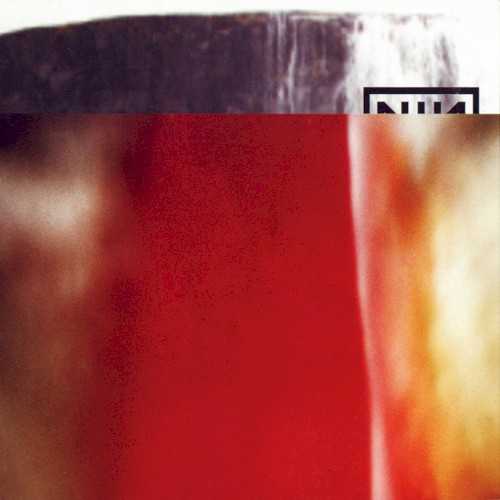 | Album: 3 of 12 Title: The Fragile Released: 1999-09-20 Tracks: 23 Duration: 1:44:07 Scroll: Up Down Top Bottom 25% 50% 75% Spotify TrackSamples Wikipedia Allmusic AlbumCover | 1 Somewhat Damaged (04:31) 2 The Day the World Went Away (04:33) 3 The Frail (01:54) 4 The Wretched (05:25) 5 We’re in This Together (07:16) 6 The Fragile (04:35) 7 Just Like You Imagined (03:49) 8 Even Deeper (05:47) 9 Pilgrimage (03:31) 10 No, You Don’t (03:35) 11 La Mer (04:37) 12 The Great Below (05:17) 1 The Way Out Is Through (04:19) 2 Into the Void (04:51) 3 Where Is Everybody? (05:42) 4 The Mark Has Been Made (05:17) 5 Please (03:32) 6 Starfuckers, Inc. (05:02) 7 Complication (02:32) 8 I’m Looking Forward to Joining You, Finally (04:15) 9 The Big Come Down (04:14) 10 Underneath It All (02:48) 11 Ripe (with Decay) (06:34) |
| The Fragile : Allmusic album Review : As the double-disc The Fragile unfurls, all of Nine Inch Nails trademarks -- gargantuan, processed guitars, ominous electro rhythms, near-ambient keyboards, Trent Reznors shredded vocals and tortured words -- are unveiled, all sounding pretty much how they did on The Downward Spiral. Upon closer inspection, there are new frills, yet these arent apparent without digging -- and whats on the surface isnt necessarily inviting, either. There is nothing as rhythmic or catchy as "Closer," nothing as jarring as the piano chorus of "March of the Pigs," no ballad as naked as "Hurt." When Reznor does try for something immediate and visceral, he sounds recycled. Fortunately, The Fragile lives up to its title once the first disc is over. There are some detours into noisy bluster (some, like the Marilyn Manson dis "Starfuckers, Inc.," work quite well) but theyre surrounded by long, evocative instrumental sections that highlight Reznors gifts for arrangement. Whenever Reznor crafts delicate, alternately haunting and pretty soundscapes or interesting sonic juxtapositions, The Fragile is compelling. Since they provide a change of pace, the bursts of industrial noise assist the flow of the album, which never feels indulgent, even though it runs over 100 minutes. Still, The Fragile is ultimately a letdown. Theres no denying that its often gripping, offering odd and interesting variations on NIN themes, but thats the problem -- theyre just variations, not progressions. Considering that it arrives five years after Spiral, that is a disappointment. Its easy to tell where the time went -- Reznors music is immaculately crafted and arranged, with every note and nuance gliding into the next -- but he spent more time constructing surfaces than songs. Those surfaces can be enticing but since its just surface, The Fragile winds up being vaguely unsatisfying. | ||
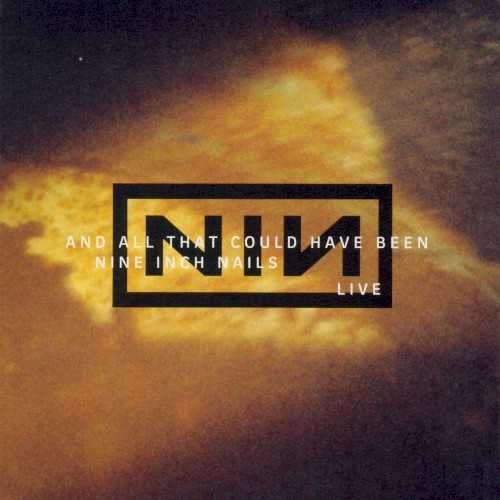 | Album: 4 of 12 Title: And All That Could Have Been Released: 2002-01-22 Tracks: 25 Duration: 1:57:23 Scroll: Up Down Top Bottom 25% 50% 75% Spotify Wikipedia Wikipedia Allmusic AlbumCover | 1 Terrible Lie (04:59) 2 Sin (04:15) 3 March of the Pigs (04:13) 4 Piggy (04:51) 5 The Frail (01:41) 6 The Wretched (05:24) 7 Gave Up (04:14) 8 The Great Below (05:07) 9 The Mark Has Been Made (03:45) 10 Wish (03:40) 11 Suck (04:13) 12 Closer (05:38) 13 Head Like a Hole (04:54) 14 The Day the World Went Away (06:29) 15 Starfuckers, Inc. (05:30) 16 Hurt (04:59) 1 Something I Can Never Have (06:39) 2 Adrift and at Peace (02:52) 3 The Fragile (05:12) 4 The Becoming (04:30) 5 Gone, Still (02:36) 6 The Day the World Went Away (05:17) 7 And All That Could Have Been (06:14) 8 The Persistence of Loss (04:03) 9 Leaving Hope (05:57) |
| And All That Could Have Been : Allmusic album Review : Trent Reznors protégé, Marilyn Manson, released the live Last Tour on Earth album in 1999 to try and capitalize on his dwindling success. The album was competent and sounded good but did very little to the material to make it different from the album versions, causing the album to disappear without much of a fuss. Only three years later, Reznor finds himself in a touchier spot with similar results. It is not that he is no longer an important artist at this point, but his commercial success fell away during the four-year recording sessions for The Fragile, leaving him with a solid core base of fans but missing the commercial success he once enjoyed. And All That Could Have Been, taken from the tour of that album, is much like Mansons live album in the sense that these renditions are not at all bad. But most of the songs found here are virtually the same as the album versions, with only rougher vocals and crowd noise to really change things up. The few songs from Pretty Hate Machine ("Terrible Lie," "Sin," and "Head Like a Hole") get the best treatment, changed around to include better guitar work and more experimental samples that compliment the songs nicely. This same approach sinks "Suck," the Pigface cover that has only previously appeared as a hidden track on the Broken EP. Where the original thrived on a shaky structure and Reznors raging vocals, this time around there is a solid base that may bring more sense to the song but takes away all of the drive. Reznor is an excellent vocalist, but his live work is barely different from his studio work, except for the moments where he is obviously too far away from the microphone. The band plays quite well but does little to give the music any of the spark that the music deserves. In fact, that is the main problem with the album: there is a distinct lack of energy that gives this the distinct feel of a cash-in, not a genuine live experience. Nine Inch Nails are a powerful live force, but this album does not reflect the intensity they can muster in a live setting. Fans of Reznor may enjoy this very much, but to the casual listener this is like a muddy-sounding greatest hits. Much better is the two disc limited edition version, which includes an entire album of Reznor performing moody ballads at his piano with a skeletal backup band. This second disc displays the variety that the one disc version is sorely missing. | ||
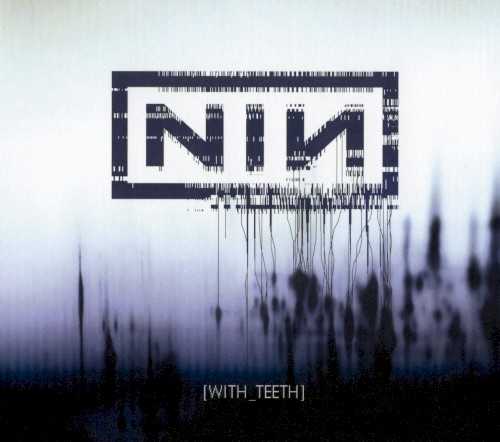 | Album: 5 of 12 Title: With Teeth Released: 2005-04-27 Tracks: 16 Duration: 1:08:20 Scroll: Up Down Top Bottom 25% 50% 75% Spotify Wikipedia Allmusic AlbumCover | 1 All the Love in the World (05:15) 2 You Know What You Are? (03:41) 3 The Collector (03:07) 4 The Hand That Feeds (03:31) 5 Love Is Not Enough (03:41) 6 Every Day Is Exactly the Same (04:54) 7 With Teeth (05:37) 8 Only (04:23) 9 Getting Smaller (03:35) 10 Sunspots (04:03) 11 The Line Begins to Blur (03:44) 12 Beside You in Time (05:24) 13 Right Where It Belongs (05:07) 14 Home (03:11) 15 Right Where It Belongs V.2 (05:03) 16 The Hand That Feeds (Ruff mix) (03:58) |
| With Teeth : Allmusic album Review : Trent Reznor always was a perfectionist, laboring over his final mixes with a fine-tooth comb, a belabored process that inevitably led to long gaps between albums. About five years a piece, actually, a wait that was sustainable between his 1989 debut, Pretty Hate Machine, and his 1994 breakthrough, The Downward Spiral; a wait, considering the expectations, that was understandable between that record and its 1999 sequel, The Fragile; yet it was a wait that was a little bewildering and frustrating between that record and its long-gestating follow-up, With Teeth. The Fragile was a grandiose, indulgent double album, dense enough to alienate fairweather fans while making advocates of those with enough time, patience, and fanaticism to listen to it repeatedly until it all made sense. It may not have pleased everybody, but it seemed like a record that necessitated half a decade to construct, and arrived with an appropriate sense of drama. Thats not the case with With Teeth, which appeared in the spring of 2005 with the requisite deluge of press but without the sense of breathless anticipation that greeted The Fragile. Part of that was changing times -- fans who were 25 in 1999 were now 30 and werent following pop music as closely -- but its also true that the double-disc set whittled his audience down to its core, diminishing Nine Inch Nails stature somewhat. They still had their cult and still won accolades from those convinced that artists who were important in 1995 were still important in 2005, but NIN seems not only out of step but diminished in 2005. Sure, Rick Rubin had Johnny Cash sing "Hurt," but Reznors recordings seemed to have less impact on modern music than ever. His soundalikes vanished, his long-abandoned protégé Marilyn Manson turned the corner from self-parody to college lecturer, his romanticized goth morphed into Hot Topic stores and Evanescence. Not that any of this mattered one bit to Reznor. Instead of grabbing the gold ring when he had a chance in 1995, he squirreled himself away in his New Orleans house, recording obsessively, and according to some interviews conducted around the release of With Teeth, succumbing to alcohol addiction. He consciously turned away from stardom, along with anything happening in contemporary pop, so he could tinker in the studio. That lead to the obsessive, insular The Fragile, and that same impulse drives the sleek, streamlined, diamond-hard With Teeth. Quite frankly, this is the record that NIN should have released if Reznor had wanted to capitalize on the success of The Downward Spiral. Its loud and angry, doesnt skimp on hooks, and is heavy on both sexy robotic dance beats and crashing rock rhythms (some supplied by everybodys favorite drummer, Dave Grohl, but not that youd know it from reading the CD; the chintzy packaging not only has no credits, it has no booklet) -- all things that made "Closer" an alt-rock classic. But for all the surface similarities to his past albums, there is a palpable difference in tone and approach on With Teeth. This is the work of a craftsman, a musician who meticulously assembles his work by layering details so densely, theres never a moment on the record where something isnt roiling under the surface, where something isnt added to the mix. Hes good at this, though. With Teeth is an impressive achievement technically and the music is generally strong, yet theres a nagging problem -- namely, theres nothing new here. Its not that Reznor is recycling himself -- hes far too compulsive a craftsman for that -- but hes not pushing himself, either, preferring to work within the box he created himself ten years ago. Consequently, the music sounds as if it comfortably could have been released in 1996, the time when Reznors style of music was at its popular peak. Theres nothing wrong with that -- plenty of rock and pop musicians are craftsmen, working the same sound and finding interesting variations within it -- but theres something awkward about an industrial craftsman, or at least as how its practiced by Reznor. His biggest problem is that while he shows considerable skill, even subtlety, in his music, the tortured sentiments of his lyrics are frozen in amber. Theyre eternally adolescent and they sound juvenile, even embarrassing, coming from a man on the verge of his 40th birthday. These words work when sung by a young man, when theyre sung with a sense of urgency, but "urgency" is not a word that can be associated with NIN, even on a record like this that takes great pains to sound visceral and alive. Reznor is too insulated, too shut out from the outside world, too unconcerned with pleasing anybody but himself to make anything close to urgent. Without that sense of hunger, his music doesnt have mass appeal, leaving it to the hardcore who appreciate his sense of craft and construction, listeners who are eager to listen to the album enough times to memorize the details. In short, the same listeners who had the patience to learn how to love The Fragile will learn how to love With Teeth. | ||
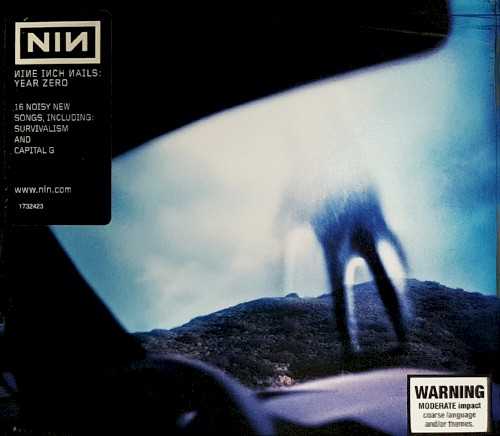 | Album: 6 of 12 Title: Year Zero Released: 2007-04-14 Tracks: 16 Duration: 1:03:51 Scroll: Up Down Top Bottom 25% 50% 75% Spotify Allmusic AlbumCover | 1 HYPERPOWER! (01:42) 2 The Beginning of the End (02:47) 3 Survivalism (04:24) 4 The Good Soldier (03:23) 5 Vessel (04:53) 6 Me, I’m Not (04:52) 7 Capital G (03:50) 8 My Violent Heart (04:14) 9 The Warning (03:39) 10 God Given (03:51) 11 Meet Your Master (04:09) 12 The Greater Good (04:52) 13 The Great Destroyer (03:17) 14 Another Version of the Truth (04:09) 15 In This Twilight (03:34) 16 Zero‐Sum (06:15) |
| Year Zero : Allmusic album Review : Nine Inch Nails 2007 release Year Zero will undoubtedly go down in rock history for the way the recording was marketed before its release. It may mark the first time that the advance strategy -- conceived of and executed, for the most part, by NIN auteur Trent Reznor himself with 42 Entertainment -- became part and parcel of the edifice that is the albums concept: an alternate reality game and a possible film project that lasts three years in total make up the rest. Months before the recordings actual issue date, T-shirts appeared with highlighted letters in code that spelled out "I Am Trying To Believe." Hip fans added a dotcom to the words and found a website discussing "The Presence," a shadowy four-fingered hand on the sets cover that appears throughout the booklet, in web discussions of the set, and references to the drug "Parepin," which was allegedly introduced into the water supplies of large cities to make them safe against bio-terror yet induced mass hallucinations as a side effect. There were other websites as well which described the "Church of Plano," the confessions of a government murderer for hire, and more, as well as a phone number that played the spooky beginning of the track "Survivalism." There were several thumb drives placed strategically in bathrooms of NIN concerts around the world that contained entire tracks from the album. Whats more, this guerilla "marketing" campaign has not been commented on by Reznor except to say that it is not marketing, but part of the concept of Year Zero itself and not meant to induce consumers to buy the record. Right. Given this ambitious schemata for Year Zeros release along with the concept -- a dystopian, paranoid, angry and schizophrenic look at life in the United States circa 2022 -- it is the music contained on the disc and only the music that is the bellwether of whether or not the ambition and effort were worth it. Year Zero comes virtually on the heels of 2005s With Teeth, and is a virtual sprint for Reznor who is known to take notoriously long breaks between recordings. A large portion of the albums rough tracks were recorded with a laptop setup while on tour, and it feels like it. There are hidden sounds, textures, shadings, passages, and more in virtually every cut where heavy metal, industrial , ambient, hip-hop, post-futurist balladry and strings rub up against each other and punch one another in a glorious rawk din. Melodies are asserted and turned inside out, added onto with other segments, and either returned to or not. And yet, the sound of Year Zero is cohesive, adventurous, full of dynamics, tension and character. The songs sound like songs. There are discernible hooks in "The Beginning of the End," "Survivalism," "The Greater Good," and the utterly moving and brilliant "Zero-Sum," which closes the disc. While many of the Nine Inch Nails recordings after Downward Spiral relied on sheer force to bludgeon listeners into submission, the atmospheres on Year Zero are far more seductive and and inviting. This doesnt mean there isnt a powerful blend of electronics and in-the-red vanguard rock, along with mutant science-fiction funk, from the opening "Hyperpower!" and "The Beginning of the End," where guitars squall against glitches, beeps, pops, and blotches of blurry sonic attacks. Percussion looms large, distorted, organic, looped, screwed, spindled and broken. Its as if Reznor spent some real time listening to the Hank Shocklee and the Bomb Squad, Public Enemys sound architects for inspiration. His notion of the same doesnt borrow from them so much as extrapolate and shove to the margin the idea of sound as the driving force that carries a songs structure, and not vice-versa: check "Survivalism" and "Me, Im Not." It comes down to something both prophetic and age old: Year Zero is an album that more accurately reflects its time period than any other in the pop pantheon. Its paranoia and rage are well founded by the lack of choices. Near the end of "The Good Soldier," Reznors protagonist emerges shattered and bewildered by the bloodshed in all this world and his personal one intones: "No ones even sure/What were fighting for/Or who we even are anymore/I feel/so far away...." In the faux-hip-hop funky rock in "Capital G" amid the scree and feedback, this character with his ragged singsong rap offers: "Well I used to stand for something/But forgot what that could be/theres a lot of me inside you/maybe youre afraid to see/Well I used to stand for something/Now Im on my hands and knees/Traded in my god for this one/signs his name with a capital G," while a horn section bleats and burns, treated and mutilated by bleeps and glitches with a deep, scathing bassline. In the universe of Year Zero, apathy, though desired, is never enough. This is portrayed in "My Violent Heart" and "The Warning," sonically as well as lyrically. In the latter track, beats shift with huge electronic and guitar drones, pushed by the confounded emotion inherent in the lyric to the place of the apocalyptic entrance of the "presence" coming down from the sky -- is it an hallucination, an actual vision of retribution, or willful destruction by the protagonist? -- "....Weve been watching you with all of our eyes/And what you seem to value most/so much potential/or so we used to say/your greed, self-importance, and your arrogance...your time is ticking away." The burning electronic funk in "God Given" reveals the urgency of a situation with no choices but to look straight in front of you." Apocalypse and some frightening future of absolute control have been seeded and watered in the present day, from one American generation to the next as societal disintegration has resulted in the willful acquiescing of freedom, all done to monster beats, scratches, chants and completely sick rock & roll freak-out. You can find the tension whipped to frenzy pitch in "Meet Your Master," where the new boss is some grainy reality that acquits no one, offers no mercy, and where forgiveness is a concept rather than a definition of anything real. In the bass throb and guitar caterwaul in the middle, Reznor dispassionately intones, "come on down down, come on down, come on down..." Its echoed endlessly as layers of noise and feedback assert themselves over the shuffling bomb of the bass loop. What all this schizophrenic fright, political and cultural nausea and social paranoia add up to is a future of no choices because those choices were all pissed away in our gluttonous use of the environment, of other societies for our own purposes and sheer hedonism. The strange sound of marimbas and vibraphones slip ethereally from one song to the next, as if to belie the absence something that was; it has been placed under erasure; its a collective past whose trace is barely recognizable in the future of no choice "freedom." Year Zero is the finest Nine Inch Nails recording since Downward Spiral. Its songs are memorable, beautifully constructed and articulated. Reznors manner of writing on a laptop and recording as he went on the road was beneficial in that it provided a larger context for his lyric ideas as they matched up to the splatter and crash of his musical ones. This is Reznors least "personal" album," and hence it becomes his most personal; because as his vision widens to embrace an entire generation inside the conceptual reality of Year Zero and "The Presence," he embraces the things he dreads, fears and bristles at most with complete conviction -- even if that conviction is rooted at times in irony (and thank goodness for that). Certainly the album is bleak and doesnt make for bland entertainment, but then, his records never do. This one is as fully realized as a rock & roll album for the post-9/11 world can be, even if its totality is not held in the zeros and ones of binary code, but in extraneous web sites and alternate reality gamesmanship: in other words, the music stands on its own no matter what else accompanies it. Year Zero is bloodied but unbowed rock with a capital "R"; its a serious and marginal pop treatise on the lack of political and social awareness inherent in the current and perhaps near future culture. It reveals in song and sound the helplessness bred in the individuals eminent collision and collusion with a perceived enemy. It becomes a kind of manifesto, a Jeremiad prophecy of what may arrive, however metaphorically, if these shadows do not change. Its brilliant, disturbing, necessary. | ||
 | Album: 7 of 12 Title: Ghosts I–IV Released: 2008-03-02 Tracks: 36 Duration: 1:50:16 Scroll: Up Down Top Bottom 25% 50% 75% Spotify Wikipedia Allmusic AlbumCover | 1 1 Ghosts I (02:49) 2 2 Ghosts I (03:16) 3 3 Ghosts I (03:51) 4 4 Ghosts I (02:13) 5 5 Ghosts I (02:52) 6 6 Ghosts I (04:19) 7 7 Ghosts I (02:01) 8 8 Ghosts I (02:56) 9 9 Ghosts I (02:47) 10 10 Ghosts II (02:42) 11 11 Ghosts II (02:17) 12 12 Ghosts II (02:17) 13 13 Ghosts II (03:14) 14 14 Ghosts II (03:06) 15 15 Ghosts II (01:53) 16 16 Ghosts II (02:30) 17 17 Ghosts II (02:13) 18 18 Ghosts II (05:14) 1 19 Ghosts III (02:12) 2 20 Ghosts III (03:39) 3 21 Ghosts III (02:54) 4 22 Ghosts III (02:31) 5 23 Ghosts III (02:44) 6 24 Ghosts III (02:39) 7 25 Ghosts III (01:59) 8 26 Ghosts III (02:26) 9 27 Ghosts III (02:52) 10 28 Ghosts IV (05:22) 11 29 Ghosts IV (02:55) 12 30 Ghosts IV (02:59) 13 31 Ghosts IV (02:26) 14 32 Ghosts IV (04:26) 15 33 Ghosts IV (04:02) 16 34 Ghosts IV (05:52) 17 35 Ghosts IV (03:30) 18 36 Ghosts IV (02:18) |
| Ghosts I–IV : Allmusic album Review : Roughly a year after Year Zero -- a year marked by lots of sniping with his record company first about their clueless promotion then devolving into a tirade about their general uselessness -- Trent Reznor broke free of Interscope/Universal and became a free agent, releasing music where and when he wanted. To celebrate his freedom he released the four-part Ghosts, a clearinghouse of 36 instrumentals all created during the years he crafted Year Zero. It should come as no great surprise that Ghosts then plays like a sketchbook, a place where Reznor jotted down sounds and textures that flitted across his mind and then either took them no further, or decided to spin them into something entirely new for the full album. These arent songs, theyre seeds, and they (appropriately) arent even graced with titles; theyre all dubbed "Ghosts," parts one through 36, and if Reznor didnt spend enough time crafting them into proper songs, dont feel too bad if you dont spend enough time with Ghosts to sort through them, picking out which fragments are powered by a clenched electro beat and which are glassy ambient shards. Even fanatics might be hard-pressed to give Ghosts such a careful listen as its simply not meant to be so closely observed. Its meant to be taken as surface, perhaps skimmed for samples, but generally to be used as mildly unsettling mood music -- a specialty of Reznors, to be sure, but hes better and scarier when his ideas are more finely honed than they are here. | ||
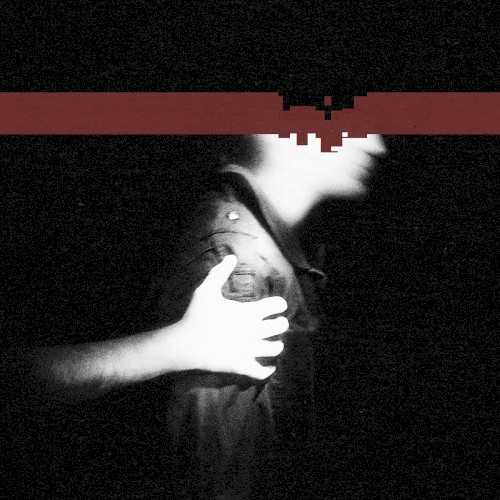 | Album: 8 of 12 Title: The Slip Released: 2008-05-05 Tracks: 10 Duration: 43:51 Scroll: Up Down Top Bottom 25% 50% 75% Spotify Wikipedia Allmusic AlbumCover | 1 999,999 (01:25) 2 1,000,000 (03:56) 3 Letting You (03:49) 4 Discipline (04:19) 5 Echoplex (04:45) 6 Head Down (04:55) 7 Lights in the Sky (03:29) 8 Corona Radiata (07:33) 9 The Four of Us Are Dying (04:37) 10 Demon Seed (04:59) |
| The Slip : Allmusic album Review : Hard to believe that at one point Trent Reznor was seen as the quintessential perfectionist, squirreled away in a decaying Victorian house, sweating over each individual track he created, spending upwards of six years between albums. Hes shattered that image in the new millennium, especially after his 2007 divorce from Interscope, a parting of the ways that left him free to release albums when and how he chose. Reznor immediately embraced that opportunity, releasing the instrumental double-album Ghosts I-IV without announcement in March 2008, then quickly following it two months later with The Slip, a full-fledged vocal album. Such rapid succession served notice that Reznor intended to take full advantage of his freedom, and its availability as a free lossless download prior to its physical release couldnt help but be seen as a veiled stab at Radioheads variable pricing for In Rainbows, a move Trent called a "marketing gimmick," a charge that cant quite be leveled against Nine Inch Nails as Reznor encouraged fans to post The Slip elsewhere, to give it away to friends, to remix their tracks if they wished. Unlike Ghosts, which seemed designed with remixing and sampling in mind, The Slip doesnt cry out for recontextualization in order to make sense: its riveting on its own terms. Mercilessly tight and efficient where Year Zero was majestic and sprawling, The Slip is the most user-friendly Nine Inch Nails album ever. At only ten tracks, there is no fat on its bones. It does not offer a slow build, it leaps into action with the lacerating "1,000,000," maintaining a blistering intensity for half the record before eventually winding its way to softer moments for the albums conclusion. There is no learning curve to The Slip, it does not require effort to decode a narrative, it does not slowly unfold its own internal logic, it comes on with a tightly controlled force thats present even in the quietest moments, as they pulsate with coiled tension. The Slip is so easy to digest because Trent Reznor is in consolidation mode, relying on his strengths instead of punishingly pushing himself forward. Such obsession with progress weighed down The Fragile and With Teeth, turning them into intricate puzzle boxes for devotees, but Reznor began to break free with the quite magnificent Year Zero, whose dense narrative likely alienated many fans. Here on The Slip, he retains the sense of urgency that flowed through Year Zero, but as its a lean album, its easier to appreciate his mastery of darkness and light or his ability to construct throbbing melodic hooks out of noise. Here, hes no longer a stylized, self-conscious innovator, hes a working musician enraptured by making music, and hes so invigorated by creation its hard not to get sucked in as well. | ||
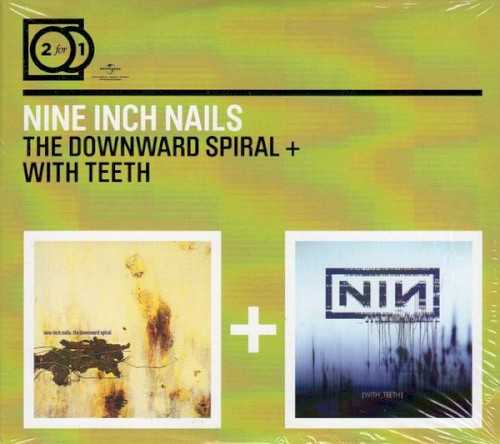 | Album: 9 of 12 Title: The Downward Spiral / With Teeth Released: 2010-05-10 Tracks: 28 Duration: 2:04:27 Scroll: Up Down Top Bottom 25% 50% 75% AlbumCover | 1 Mr Self Destruct (04:30) 2 Piggy (04:24) 3 Heresy (03:54) 4 March of the Pigs (02:58) 5 Closer (06:13) 6 Ruiner (04:58) 7 The Becoming (05:31) 8 I Do Not Want This (05:41) 9 Big Man With a Gun (01:36) 10 A Warm Place (03:22) 11 Eraser (04:53) 12 Reptile (06:52) 13 The Downward Spiral (03:56) 14 Hurt (06:14) 1 All the Love in the World (05:15) 2 You Know What You Are? (03:41) 3 The Collector (03:07) 4 The Hand That Feeds (03:31) 5 Love Is Not Enough (03:41) 6 Every Day Is Exactly the Same (04:54) 7 With Teeth (05:37) 8 Only (04:23) 9 Getting Smaller (03:35) 10 Sunspots (04:03) 11 The Line Begins to Blur (03:44) 12 Beside You in Time (05:24) 13 Right Where It Belongs (05:07) 14 Home (03:11) |
 | Album: 10 of 12 Title: Hesitation Marks Released: 2013-08-30 Tracks: 28 Duration: 2:03:52 Scroll: Up Down Top Bottom 25% 50% 75% Spotify Allmusic AlbumCover | 1 The Eater of Dreams (00:52) 2 Copy of A (05:22) 3 Came Back Haunted (05:17) 4 Find My Way (05:15) 5 All Time Low (06:17) 6 Disappointed (05:44) 7 Everything (03:19) 1 Satellite (05:02) 2 Various Methods of Escape (05:01) 3 Running (04:07) 4 I Would for You (04:32) 5 In Two (05:31) 6 While I’m Still Here (04:02) 7 Black Noise (01:29) 1 The Eater of Dreams (00:52) 2 Copy of A (05:22) 3 Came Back Haunted (05:17) 4 Find My Way (05:15) 5 All Time Low (06:17) 6 Disappointed (05:44) 7 Everything (03:19) 8 Satellite (05:02) 9 Various Methods of Escape (05:01) 10 Running (04:07) 11 I Would for You (04:32) 12 In Two (05:31) 13 While I’m Still Here (04:02) 14 Black Noise (01:29) |
| Hesitation Marks : Allmusic album Review : Retirement never suited Trent Reznor. A workaholic who tempers his obsessive nature with a healthy streak of perfectionism, Reznor has put Nine Inch Nails in hibernation before, but the difference between the five years separating 2013s Hesitation Marks and 2008s The Slip and his previous extended gaps -- the half-decade between 1994s The Downward Spiral and The Fragile, the six years between The Fragile and 2005s With Teeth -- is that Reznor didnt go into seclusion, he merely stepped away from NIN. David Fincher drafted him to score The Social Network in 2010 -- Trent received an Academy Award for his trouble -- and that same year he formed How to Destroy Angels with longtime collaborator Atticus Ross and Mariqueen Maandig. Echoes of these two projects can be heard within the disciplined, detailed Hesitation Marks but much of the albums measured mood derives from the great settling within Reznors personal life. He married Maandig in 2009 and subsequently had two children, so hes a decidedly different musician in 2013 than he was in 1993: hes not the tortured, angry young rebel struggling with addictions and angst, hes a sober family man. Sobriety centered Reznor and working in other capacities reinvigorated him, leading to the masterful Hesitation Marks, where he cannily evokes the past within the cloak of the future while focusing on the present. Certainly, Hesitation Marks brings to mind some of the earliest Nine Inch Nails records, particularly in how its built upon actual danceable rhythms, but the sonic palette is brighter and broader than either Pretty Hate Machine or The Downward Spiral, feeling expansive even when its punctuated with jarring, jagged bursts of electric noise and bursts of clustered beats. Reznor enlisted a bunch of art rock vets to help achieve this coiled, cloistered sound -- King Crimson guitarist Adrian Belew and bassist Pino Palladino play often, Lindsey Buckingham throws in some guitar; on the deluxe edition, Todd Rundgren Utopia-fies "All Time Low" with layers of harmonies -- and the additional musicians help keep the album open. Even if "Everything" -- a surprising power pop rush thats easily the most exuberant Nine Inch Nails has ever sounded -- was excised, Hesitation Marks would qualify as the most hopeful NIN album ever. Pain still punctuates the lyrics, Reznor still slides into moody black pools of sound, but there is no wallowing here, no fetishization of darkness. There is shade and light within Reznors immaculate constructions, there is the ebb and flow of life, there is joy within the sheer sheets of sound. Hesitation Marks makes it quite clear that Trent Reznor is no longer an angry young man but rather a restless, inventive artist who is at peace with himself, and the result is a record that provides real, lasting nourishment. | ||
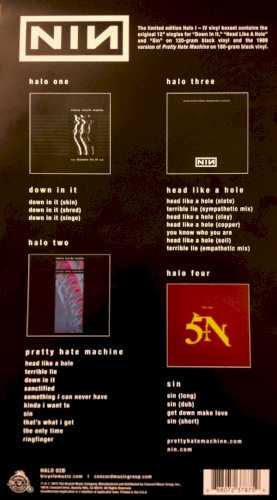 | Album: 11 of 12 Title: Halo I–IV Released: 2015-11-27 Tracks: 24 Duration: 2:04:20 Scroll: Up Down Top Bottom 25% 50% 75% AlbumCover | 1 Down in It (03:48) 2 Down in It (Shred) (06:56) 3 Down in It (Singe) (07:03) 1 Head Like a Hole (05:01) 2 Terrible Lie (04:38) 3 Down in It (03:48) 4 Sanctified (05:50) 5 Something I Can Never Have (Still) (05:54) 6 Kinda I Want To (04:35) 7 Sin (04:05) 8 That’s What I Get (04:30) 9 The Only Time (04:49) 10 Ringfinger (05:40) 1 Head Like a Hole (Slate) (04:15) 2 Terrible Lie (Sympathetic mix) (04:27) 3 Head Like a Hole (Clay) (04:32) 4 Head Like a Hole (Copper) (06:26) 5 You Know Who You Are (05:41) 6 Head Like a Hole (Soil) (06:38) 7 Terrible Lie (Empathetic mix) (06:12) 1 Sin (long) (05:50) 2 Sin (dub) (04:57) 3 Get Down Make Love (04:18) 4 Sin (short) (04:19) |
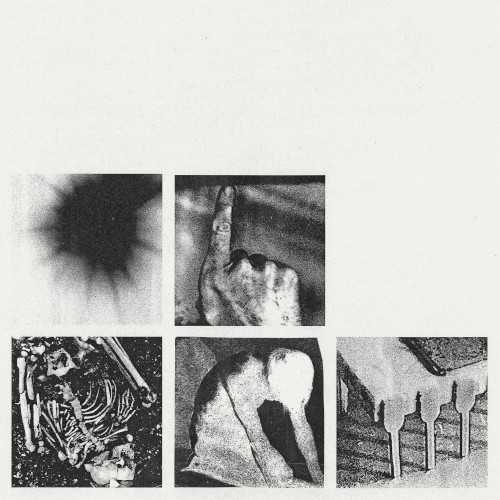 | Album: 12 of 12 Title: Bad Witch Released: 2018-06-22 Tracks: 6 Duration: 30:15 Scroll: Up Down Top Bottom 25% 50% 75% Spotify Allmusic AlbumCover | 1 Shit Mirror (03:06) 2 Ahead of Ourselves (03:31) 3 Play the Goddamned Part (04:51) 4 God Break Down the Door (04:15) 5 I’m Not From This World (06:42) 6 Over and Out (07:50) |
| Bad Witch : Allmusic album Review : On Bad Witch, Trent Reznor and Atticus Ross conclude the conceptual narrative arc started on 2016s Not the Actual Events and continued on 2017s Add Violence. Drifting outside the comfort zone of what a Nine Inch Nails album is expected to sound like, Bad Witch is the least accessible of the trilogy, a pessimistic, misanthropic, and frustrating cacophony that challenges even the most devoted NIN fan. And yet, after multiple listens, Bad Witch reveals itself as the most cohesive and enveloping experience of this period. As Reznor noted in interviews, Events focused on self-reflection and self-destruction, while Violence searched for answers from a broken world. Bad Witch concludes that were the problem and humanity is doomed. That nihilistic blood courses through these six songs, which can be divided into pairs: a triptych within the trilogy. Reznor launches an immediate assault with "Shit Mirror," a corrosive reflection of the worst of us all. Shards of Broken cut through the distortion and handclaps and saxophones herald a "new world, new times" as Reznor accepts that "mutation feels alright." Bleeding directly into "Ahead of Ourselves," the torrent continues, with Reznors ring-modulated vocals buried beneath a heavily programmed drumnbass beat and jagged riffs. Maniacally hopeless, humanity is condemned as a pack of "knuckle dragging animal(s)" who celebrate ignorance. Reznor hasnt been this outwardly pissed off in years and its a thrill. The heart of Bad Witch owes much to David Bowie and his final album, Blackstar. Instrumental jazz break "Play the Goddamned Part" -- which recalls Lost Highways "Driver Down" expanded with more sax squeals and piano tinkering -- serves as a five-minute introduction to the Lynch-ian noir of lead single "God Break Down the Door," an oddity in the NIN catalog that debuts Reznors hitherto unheard, Bowie-esque croon. Bad Witch closes with a pair of experimental squalls that devour nearly half of the albums run time. "Im Not from This World" builds with ominous dread, an unnerving mutation of Reznors work on the Quake soundtrack. "Over and Out" ends Bad Witch and the trilogy itself with more sax, full-throated singing, Year Zero beats, and ghostly Fragile-era xylophone. Both warning and resignation, Reznor cautions "time is running out" as the song evaporates into the ether, ending this 18-month journey on an uncomfortable note. As the band looks back upon three decades of pain and rage, Reznor and Ross leave the sonic bread crumbs and callback allusions to the first two installments, advancing with fresh and surprising new possibilities for the coming era of Nine Inch Nails. | ||